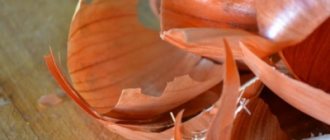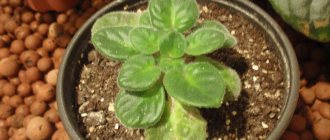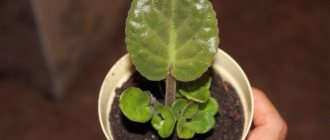Category: For flowers and indoor plants Reading time: 8 min · Views: 4,359
Violet is the most common house flower. Beautiful multi-colored violets (Saintpaulias) can be found on almost every windowsill, and not only in private homes. However, the flower does not always please with its blossoming inflorescences, since active flowering requires minerals and vitamins. Let's consider the topic: feeding violets at home. How should you fertilize the soil in flowerpots so that the flowers are pleasing to the eye throughout the growing season?
Briefly about the features of keeping violets
Perhaps you know what rules must be followed when planting violets at home.
But even if so, repetition is the mother of learning, so let’s list the features of keeping Saintpaulia at home again. Capacity. In order to grow and bloom normally, the violet pot must have a diameter of 13 cm.
Substrate. The soil in which you plant a houseplant must be well aerated and light enough
It is important that the substrate has the ability to retain moisture.
Content temperature. The minimum temperature standard for growing Saintpaulias is 20 degrees Celsius. Maximum - 25 degrees.
Regularity of watering. It is important not to overfill or overfill the violet.
Don’t let the flower go without water for too long, but you shouldn’t add water to the still-damp soil either.
Winter care. During the cold season, violets are sorely lacking sunlight. Therefore, it is important to illuminate Saintpaulias with special lamps. If you don’t have them on your household, regular solar lamps will do.
Another point of caring for Saintpaulias is feeding. We will talk about it in more detail below.
But let’s make a reservation right away: it’s not enough to just fertilize violets, it’s important to do it in a timely manner. Because, for example, in the cold season, microelements added to the soil will only interfere with Saintpaulia
And this is not the only feature of adding nutrients to the soil.
Features of caring for violets
For the rapid flowering of this home beauty, appropriate conditions are required:
- illumination minimum 12 hours;
- moderate air humidity (minimum 50%);
- timely watering;
- balanced soil mixture composition;
- constant air temperature 22-24C.
In addition to the listed conditions, Saintpaulia requires nutrients in the form of balanced organo-mineral fertilizers:
- nitrogen compounds are necessary for the active development and growth of green mass;
- phosphorus and potassium are necessary for the root system and bud formation.
Saintpaulia also needs other mineral components, but the ones mentioned above are the basis for the life of any plant.
All types of fertilizers for Saintpaulia can be divided into 3 groups:
- organic;
- inorganic simple;
- inorganic compounds.
Everything is clear with organics: these are ash, plant infusions, and other dietary supplements of organic origin. Inorganic simple fertilizers are those preparations that contain only one substance. These include ammophoska and nitroammophoska (contain nitrogenous compounds), potassium salt and others.
Complex nutrition for violets contains a balanced composition of various minerals and vitamins, which is designed to achieve a specific goal: to enhance the growth of green mass, enhance flowering, etc.
Signs of micronutrient deficiency:
- the leaves have become weak and thin, stretching upward;
- the violet stopped blooming;
- the plant has stopped growing or is developing very slowly;
- leaves often fall off and turn yellow;
- the violet looks “sick”.
It is advisable not to bring the plant to this state, feed it and give it vitamins on time.
"Folk remedies. How to feed at home
Many gardeners believe that the most affordable means of fertilizer are folk remedies.
Black tea
During transplantation, plants need proper care.
One of the important points in care is proper soil moisture.
To prevent the soil from drying out, many people use tea leaves in a ratio of 1:3 to soil.
It provides looseness and lightness to the soil.
Coffee grounds
It has a similar effect to tea leaves - it provides looseness and lightness. But unlike tea, coffee grounds can be used for watering.
Just remember that when watering flowers with grounds, water can only be added after a while.
Yeast
They support the immunity of violets and also strengthen the root system.
In order to prepare yeast for watering you will need:
- Mix 40 g sugar and 5 g dry instant yeast
- Add 5 liters of water
- Place in a warm place for 3-4 hours
- Before use, dilute with water 1:5
You can water violets with this solution all year round. In summer no more than 3 times, and in winter one watering per month is enough.
Sugar
The most affordable fertilizer at home is sugar.
And not only because every housewife has it in the kitchen, but also because of the ease of preparation.
Simply dilute 50 grams of sugar in one liter of water and feed the plant.
Use the solution immediately after preparation, without further storage. Fertilize once a month.
Vitamin B12
Just like yeast, it strengthens the immune system. Most often used: when the violet has experienced stress (transplantation, purchase in a store) or is exhausted (after flowering).
During these periods, take one ampoule of the vitamin and dilute it with water in a ratio of 1:10.
Use no more than 2-3 times a year.
Citrus
These fruits benefit not only people, but also plants, protecting against various pests and strengthening the immune system. The peel of lemon, grapefruit, orange or tangerine is used.
- Wash the fruit
- Pour boiling water over the peel and leave for a day
- Strain
- Before use, dilute with water 1:10
Onion peel
In order for the husk to be beneficial, it must be: boiled, cooled, strained and sprayed on the plant.
This infusion perfectly gets rid of pests and protects against diseases.
Can be used for prevention, after a change of environment, after abundant flowering, in the spring, when the phase of abundant flowering begins, etc.
Iodine
The trace element Saintpaulia needs is used no more than three times per season. It is prepared in this way: one drop is diluted in three liters of water.
It is better to make a weak solution. Large amounts of iodine can damage the roots.
Feeding violets with folk remedies
You don’t have to buy ready-made chemicals, but feed your violets at home with what everyone has at home. It is also effective and will help improve soil health and flowering. Fertilizer is made from scrap materials:
You may be interested in: Fertilizer for spathiphyllum for proper development and flowering
Black tea. Most often used by indoor gardeners to feed plants. The spent tea leaves are simply poured out onto the surface of the soil in the pots. You can brew black tea of medium consistency and pour this solution over the Saintpaulia. Tea contains many beneficial substances that flowers need to bloom and grow. This procedure is carried out once every two weeks.
Coffee grounds. The grounds that remain after making coffee also perfectly loosen the soil. It can be mixed with soil and added to flower containers. After adding this fertilizer, you do not need to water Saintpaulia for a couple of weeks. During this time, the acidity of the soil will increase and its condition will improve.
Yeast. This fertilizer strengthens the root system, helps flower growth, and improves immunity. Yeast should be mixed with sugar, dissolved in warm water and left for several hours. In winter, such feeding is carried out once a month, and in the warm season 3-4 times a month.
Sugar. This simple ingredient stimulates plant growth. Simply mix it with water at room temperature and spray the violets. Processing frequency: once a month.
Vitamin B12. An ampoule of this medicine is diluted in water 1:10. It strengthens the immunity of Saintpaulia. The drug is applied twice per season.
Zest. The peel of citrus fruits repels pests, strengthens the immune system, and protects against diseases. To prepare the solution, pour boiling water over the peel and leave for a day. Then filter, add water at room temperature at the rate of 1:10. Water the violets with this solution at the root.
Onion. Onions are used to combat harmful bugs and diseases. The onion skins are poured with water, boiled for half an hour, removed and left to infuse for 8 hours. Then filter and use as a root dressing. You can spray against pests. In addition to protecting against diseases, this solution helps violets bloom more abundantly and grow better. This folk remedy should not be prepared for future use; it is effective only immediately after preparation. Iodine. It is used as an effective feeding of violets during the warm period. To water at the root, 1 drop of iodine is diluted in 3 liters of water. Three feedings are allowed per season.
https://www.youtube.com/watch?v=GvUx-zooMFc
How to care for ha violets
Even if you chose the right place and purchased a young healthy plant, this does not mean that the violet will not require care and will grow on its own. Of course, this is not at all true. For decoration and abundant flowering, your plants need good care, which includes several components:
- selection of suitable soil. When you decide to replant your violet, be sure to purchase special soil from the store. If you cannot purchase it for some reason, prepare the necessary mixture yourself by adding peat and sand to the ground. In this case, it is best to take soil from under pine and birch trees. You should not pour a lot of sand; if the soil is not loose enough, add perlite to it;
- correct watering. Violets do not care at all what kind of watering they receive, so you must know exactly what you can water these flowers with and what you should never water them with. Water for irrigation must sit for at least a day and must be warm, not lower than room temperature. Otherwise, brown spots will appear on the leaves;
- maintaining moist air in the room where your Saintpaulias are located is the second name for violets. These flowers prefer to grow in high humidity, but their hairy leaves cannot be sprayed, they do not like this. You can place saucers of water between flower pots or simply place them on wet stones, placing pebbles or gravel in a tray;
- Feeding with the right fertilizers is very important for violets; it is an essential component of their care. You can fertilize violets with a special composition, which is sold in liquid form in the store. You can dilute it with water in the required proportions and simply add it to water for irrigation.
However, I feed my violets a little differently - I put them in trays with water, to which fertilizer has been added in the right amount. Then the flowers are constantly moisturized and can receive as much water as they need. With such bottom watering, trays with pots can be safely placed on window sills; central heating radiators will not harm them.
In addition, water is guaranteed not to get on the violet rosette, which these plants simply cannot tolerate, and the leaves will not get burned if splashes of water remain on the leaves under the bright sun. In addition, with bottom watering you will not flood your Saintpaulias. By the way, when flooded, the plant can die in a matter of days.
Fertilizer should be applied no more than twice a month, so there is no need to constantly add it to the water for irrigation. At the same time, home remedies are also suitable for violets:
- you can add a little regular dry tea leaves to the soil;
- Coffee grounds are used as fertilizer, mixed with soil;
- an infusion of citrus peels is very good for violets, just don’t make it too concentrated;
- A decoction of onion peels is perfect for watering;
- no more than once a month you can water the violets with sugar water or diluted yeast. You can combine both.
This sucker is optimal for any flowering plants, not just violets. At first, when the leaves grow, nitrogen is needed, later, when the buds are laid, potassium and phosphate are needed. It is in this combination of fertilizers, applied in a timely manner and in the right quantity, that lies the secret of abundant flowering.
Signs of improper feeding
If the rules for applying fertilizers are not followed, the following deviations in the development of the plant organism are observed:
- growth retardation - indicates a lack or excess of nutrition;
- chlorosis - characterized by changes in leaf pigmentation, can be caused by a lack of nitrogen or iron;
- increased growth of the above-ground part, dark green thickened leaf blades - excess nitrogen;
- lack of flowering, dropping buds - lack of phosphorus and potassium.
How to water homemade violets to bloom profusely
How to feed ficus benjamina at home
Fertilizers can be intended for root feeding or for spraying Saintpaulia. The use of certain drugs must be due to compelling reasons. To fertilize violets, it is recommended to use either ready-made preparations or self-prepared ones using natural ingredients.
Proper watering of the plant
Ready-made complex fertilizers
The use of ready-made preparations significantly reduces the time and facilitates the process of fertilizing.
Unlike folk remedies, they do not need to be prepared in advance and concentration must be maintained. For violets it is recommended to use the following:
- Peters (Peters Professional). After using this product, the condition of the root system and violet leaves improves. It is recommended to use at the first signs of calcium deficiency. Application in winter promotes better budding in the future.
- Etisso. The product is enriched with vitamin B and beneficial microelements. Helps improve budding and increase the number of inflorescences.
- The universal fertilizer Fusco helps improve the appearance of the flower. The use of this drug allows you to increase the flowering time of violets at home.
- The drug Fort is used not only for violets, but also for begonias. It helps restore the soil and maintain the health of the flower. The manufacturer recommends weekly feeding from spring to autumn, and monthly in the autumn-winter period.
On a note. Complex fertilizers are considered more productive and effective than folk remedies.
Another interesting question is how to feed violets to stimulate them during the breeding season? Experts recommend using cytokinin paste for these purposes. If an artificially scratched plant stem is treated with this product, in 10-12 days children will grow on the flower.
Mineral nutrition for violets
Organic
The violet should be fed consistently, alternating organic and mineral preparations. Saintpaulia loves any organic matter very much. The selection of necessary fertilizers should be carried out as carefully as possible. Experienced flower growers advise using:
- Manure, bird droppings. It is preferable to use dry preparations.
- Vermicompost, concentrated or dry.
- Preparations containing microbiological components.
- Special organic substances intended specifically for violets.
What substances do violets need?
For full development, violets need 3 main elements:
- nitrogen - participates in the development of the green part of the plant, in particular in the formation of chlorophylls;
- phosphorus - promotes the development of a strong root system, participates in the formation of buds during flowering;
- potassium - necessary for abundant flowering and the formation of resistance to fungi and pests.
Violets have a long flowering period, which takes a lot of energy and requires additional nutrition, so you need to provide the plants with a complex of additional minerals:
- sulfur and magnesium - participate in photosynthesis processes;
- calcium - necessary to strengthen the rhizome;
- iron - participates in the formation of enzymes produced by the plant during photosynthesis;
- copper - helps violets resist fungal infections;
- molybdenum - allows you to increase the ability of the root system to absorb nitrogen compounds;
- zinc - indispensable for flowering and small plants, accelerates the growth of the ground part;
- boron - participates in the respiration processes of the plant organism, regulating the supply of oxygen to the roots.
When is feeding needed?
Under natural conditions, feeding Saintpaulia is out of the question. They will not grow in conditions that are not suitable for her. There are many of them only where conditions are good for them:
- At home, they are used selectively at different times: During the period of growth. The plant needs to get stronger. Grow good roots and full leaves;
- When flowering. Flowering itself requires a lot of energy and nutrients;
- And least of all after flowering. The plant needs rest and rest. And from fertilizers.
- Simple mineral fertilizers. With one element (for example, potassium);
Microbiological fertilizers.
- There are periods in the life of a violet when applied fertilizers are not desirable for it. And even harmful: In dry soil;
- A month or two after transplantation;
- When harmful insects and signs of disease appear.
Important! They should not be added at high temperatures. Same as for low ones.
Feeding calendar
When budding or active growth of violets begins, it is time to fertilize. It is necessary to feed violets in summer and spring. From September it is better to stop adding fertilizers, since after flowering the plant’s growth subsides and it does not need extra loads. Fertilizing violets is a simple procedure; it will only bring benefits to Saintpaulia.
It should be borne in mind that there is a moment when applying fertilizers can greatly harm home beauties:
- After transplantation, when the plant adapts to the new container, it is sufficiently weakened and it is better not to apply fertilizer.
- If the soil is too dry, it needs to be watered before fertilizing. Otherwise, the fertilizer may burn the roots.
- When the room temperature is too low or high.
- When the leaves are exposed to direct sunlight.
You may be interested in: How to feed lemon at home
You should not feed the plant when replanting. It is necessary to select soil rich in nutrients. If the violet was purchased in a store, you need to give it time to acclimatize in new conditions (about 2 weeks). There is no need to try to feed the plant at this time.
In spring, it is best to apply nitrogen fertilizers. Nitrogen is useful for increasing vegetative mass. As soon as the buds appear, you need to eliminate nitrogen fertilizers. For rapid flowering, it is better to feed Saintpaulia with phosphorus and potassium. Feeding is carried out once every two weeks in the following ways:
- The liquid fertilizer solution is added to the pan.
- Introduce at the root so that the fertilizer does not get on the leaves.
How to feed violets: methods of fertilizing
For all varieties of Saintpaulia there is one fertilizing technique. The exception is ampelous varieties.
Root feeding
To carry out root feeding, the following technology is used:
- The water should be at a warm temperature; it is pre-filtered and left to settle for a day. Fertilizers are dissolved in it according to the instructions. To treat young plants, it is recommended to use universal fertilizer, but the amount of fertilizer should be 2 times less than indicated.
- The concentration of fertilizers for mini-violets should be even less. These varieties are fertilized once a month.
- Liquid solutions of drugs are applied carefully only at the root to prevent liquid from getting into the center of the outlet and onto the foliage.
- If there are a lot of pots of violets, you can use the tray feeding method. The solution is poured into a large tray, where all the pots are placed. Leave for 15-20 minutes. Plants will receive all their nutrients through the drainage holes. Having fertilized, the pots are placed in their places.
Foliar feeding of violets
Many gardeners prefer foliar feeding for better absorption of nutrients. Only when fertilizing Saintpaulias you need to follow some rules:
- Do not allow drops of liquid to accumulate on the leaves. This can lead to rot and sunburn.
- Before starting feeding, the foliage must be washed to remove dust.
- Feeding should be done in the evening.
- For foliar feeding, the fertilizer concentration should be two times lower than for root watering.
- The solution is sprayed on the back of the leaves, so it is absorbed better and faster. It must be remembered that the liquid should not get on the flowers and buds of violets.
A special method of applying fertilizer is watering on a wick. Flower pots are placed on a tray with a nutrient solution. It is convenient to use this method when there are a lot of violets and they are installed on racks.
Banana peel
It contains a large amount of manganese and potassium, which makes it valuable for gardeners. These substances improve the quality of flowering and the general condition of the crop. This method of fertilization is safe and will not lead to the spread of midges (contrary to popular opinions). Prepare fertilizer and use it wisely.
Take a fresh banana peel and add water. Place in a warm room for several days. Then water the plant (moisten the soil in advance).
Related article:
Simple feeding of indoor flowers. No chemicals plus fast growth plus cheap
What fertilizers are needed for violets?
Like any plant, violets need basic elements for development - nitrogen, phosphorus and potassium, as well as microelements and organic matter. Let us briefly show what they are responsible for:
- Nitrogen promotes the growth of green mass, so its application is especially important for young plants. In the future, when the flower gets stronger and acquires a sufficient number of green and lush leaves, nitrogen-containing fertilizing is reduced;
- phosphorus and potassium are responsible for the formation of buds and flowering of violets;
- microfertilizers and humic acids are also necessary for plants to develop properly. If the diet lacks any of the elements, the flower will react to this either by yellowing of the leaves, or a change in the color of the petals, their premature wilting and other deviations.
Yellowing of violet leaves may indicate a lack of feeding
Purchased fertilizers
The easiest way is to purchase complex fertilizers, which the manufacturer has compiled from all the elements necessary for violets. The gardener will only have to dissolve this composition in water according to the rate specified in the manual for a specific fertilizer. However, you cannot use tap water - it contains chlorine, which is harmful to plants. It is better to use melt or rain water. Filtered, bottled or settled water at room temperature is also suitable.
Table: popular fertilizers for violets
| Name of fertilizer | Country of manufacture | Compound | Release form | Dosage | Features of application |
| Bona Forte | Russia | Basic (nitrogen (N) - 5%, phosphorus (P) - 5%, potassium (K) -9%) and 9 trace elements in chelated (easily digestible) form, as well as humic acids | Bottle 285 ml | 10 ml per 1.5 liters of water | Unused solution can be stored for up to two weeks |
| Master | Ukraine | NPK 3:8:5%, 6 trace elements | Bottle 300 ml | 1 cap (5 ml) per 1 liter of water | Shelf life - 3 years |
| Etisso | Germany | NPK 3.8:7.6:7.5%, 6 microelements, vitamin B1 | Bottles with dispenser of 250, 500 and 1000 ml | 1 dose (10 ml) per 1.5 liters of water | |
| Good power | Russia | 7 trace elements in chelated form, vitamins B1, PP, succinic acid, humic acids | Bottle 500 ml | 1 cap (5 ml) per 0.5 l of water | The prepared solution can be stored for up to three days. Shelf life: 5 years. |
| Fusco | Russia | NPK 4:5:6%, 8 trace elements | Bottle 250 ml | 1 cap (10 ml) per 1.5 liters of water | The prepared solution can be stored for up to two weeks. |
| Ideal | Russia | NPK 5:10:10%, humic acids - 2% | Plastic container 0.5; 1; 3 liters | 2 caps (9 ml) per 0.5 l of water | Application interval 1–2 weeks |
The table shows dosages for root feeding. If foliar applications are used, the dosage is halved.
Photo gallery: fertilizers for violets
Folk remedies
Many amateur flower growers supplement fertilizing with purchased fertilizers using various folk remedies, and some even make do with only them. Most frequently mentioned:
- yeast. For feeding, dissolve 5 grams of dry yeast and 2 tbsp. spoons of sugar in 5 liters of warm water. Allow to ferment for 3–4 hours and use, diluting with water in a ratio of 1:5;
- solution 1 tbsp. spoons of sugar (or 1 teaspoon of glucose) in 1 liter of water are used for watering once a month;
- Black tea. When planting violets, dry tea mixed with soil (1:3) will make the soil light and loose, which will protect it from drying out;
- coffee grounds can be used in the same way, or you can simply add them periodically to the root;
- An infusion of citrus peels improves plant immunity and also repels some pests. The peel is poured with boiling water and left for 24 hours. The resulting infusion is diluted with ten times the amount of water and used for irrigation;
- A decoction of onion peels will not only feed the violet, but also protect it from diseases and pests. One or two handfuls of husks are poured into 1.5 liters of boiling water and boiled for 5–7 minutes. Then leave for 2-3 hours and cool. The plant and top layer of soil are sprayed with freshly prepared infusion once a month.
For the violet to fully develop, it needs all macro- and microelements in balanced quantities. If you follow the timing and rules for applying fertilizers, beautifully blooming Saintpaulias will delight the eye and lift the spirits of everyone in the household.
Ready-made fertilizers for violet flowering
Organic fertilizers
In specialized stores you can buy special fertilizers based on humic acids, which are sold in bottles. They enhance the effect of mineral fertilizers and improve the condition of the soil, which is simply necessary for Saintpaulias to bloom. Use them according to the instructions written on the bottle.
You will be interested to know: Cow and horse manure as organic fertilizer: how to apply, process and store
Superphosphate
The fertilizer will be an excellent stimulator of flowering and will acidify the soil (violets need slightly acidic soil). Superphosphate contains nitrogen and phosphorus. The first element is necessary for foliage growth, and the second for flowering.
Powder or granules are applied to the ground in dry form at the rate of 1 tsp per liter of soil. When watering, the granules will dissolve and saturate the soil with nutrients.
Complex mineral fertilizers
For lush and long-lasting flowering, violets need potassium and phosphorus. If the fertilizer contains more nitrogen, only the foliage on the bush will be lush.
It is best to purchase special fertilizer for violets, using it strictly according to the instructions written on the bottle or packaging. When choosing, pay attention to the composition. From spring to autumn, in order for Saintpaulia to bloom profusely, choose fertilizers that contain more potassium, phosphorus and less nitrogen.
Fertilizers should be applied correctly and strictly according to the instructions. A day before fertilizing, water the violets with plain water so that the fertilizer does not burn the roots of the flower.
Types of fertilizers for violets
Various fertilizers are used to feed Saintpaulia. Once you delve into the structure and understand the rules of application and the needs of the flower, you can achieve abundant flowering for most of the year.
Feedings are:
Simple:
- nitrogen containing;
- phosphate, superphosphate;
- potassium salts.
Since they include one mineral in the structure, they can be added to the soil one at a time. Such fertilizers help to increase the pH level of the soil and make the flowering process more intense.
Complex fertilizers are balanced, saturated with all important mineral components, suitable for saturating the soil even under flowering Saintpaulias:
- Ethisso (nitrogen, phosphorus, potassium);
- Bona Forte (N, P, K);
- Master - universal feeding.
The drugs are produced in the form of powder, liquid, and can be universal or specialized.
Organic - important for saturating the soil before planting. Thanks to organic matter, the vegetative mass gains strength.
Mineral fertilizers for feeding
Simple and complex mineral fertilizers for Saintpaulia are produced; they come in the form of sticks, tablets or liquid form. Liquid fertilizer must be dissolved according to the instructions. Then they fertilize the violet at the root or along the leaf.
You may be interested in: Treatment of apple trees in the fall against pests and diseases, chemical protection preparations
Sticks or tablets are simply stuck into the soil. They decompose after regular watering, and nutrients then reach the roots of Saintpaulia.
The most popular fertilizers:
- Master;
- Good power;
- Buoy fertilizer;
- Fusco;
- Etisso;
- Peters;
- Fertika;
- Bona Forte.











